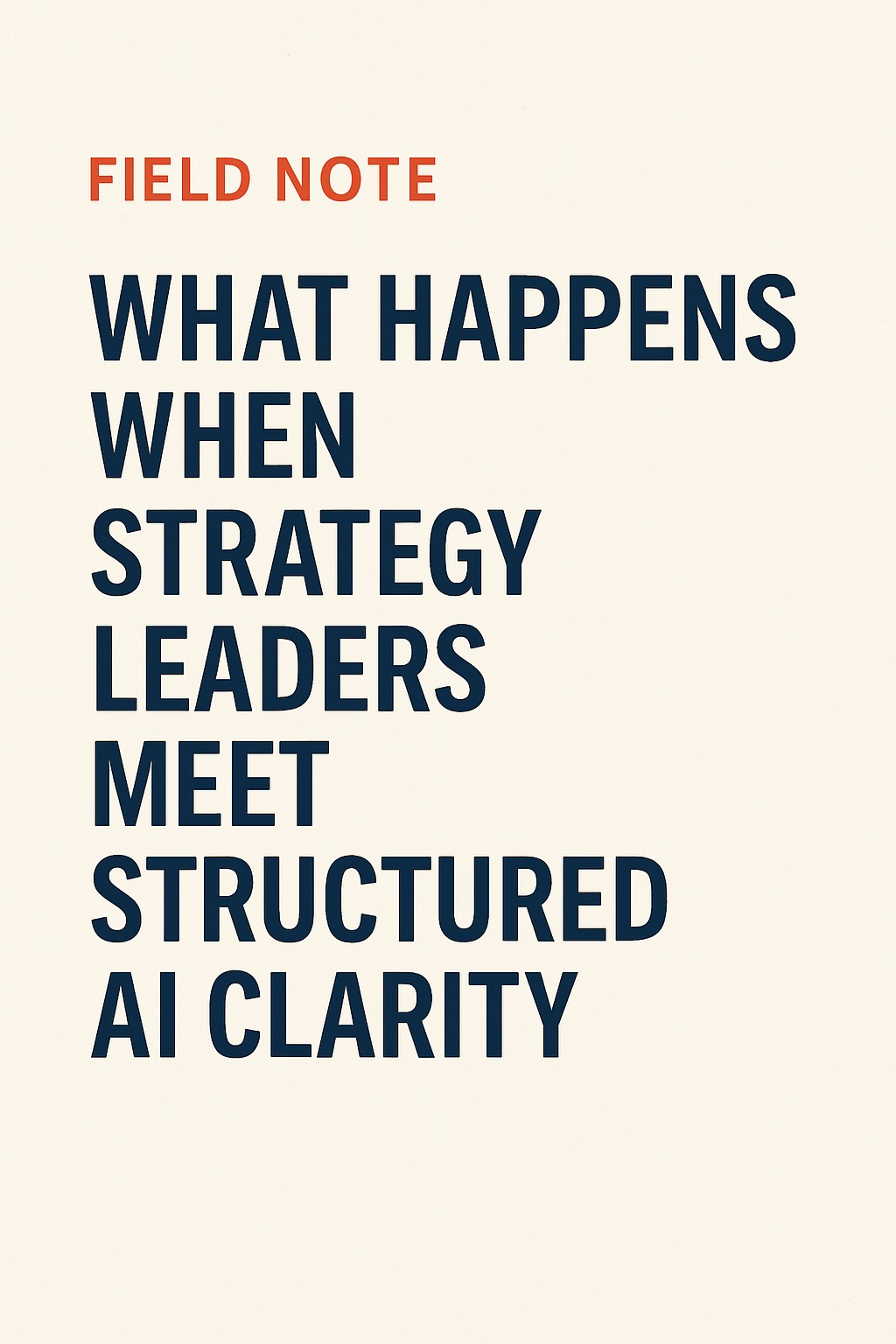Field Note: What Happens When Strategy Leaders Meet Structured AI Clarity
Last week, I delivered what might be the most mind-blowing presentation I’ve ever given. Not because of my presentation, but the quality of the conversation we had.
A room full of incredibly experienced executives—20, 30, 40+ years in the game. People who have seen every wave of tech and transformation. And yet, for two hours (on a session designed for 45 minutes), they were fully in.
Claps. Deep questions. Real hunger.
Here’s what I learned:
1. Executives Get AI—But Not What It Means for Their Business
Many in the room are already using ChatGPT. They’ve tested tools. They’re not tech-averse. But the strategic implications of AI? Still fuzzy.
What I saw was:
A lack of structured thinking about where AI actually fits
Uncertainty around what to automate, augment, or avoid
Discomfort with the pace of change in strategic planning
This isn’t an awareness problem. It’s a translation and application problem. Mainly because how has got the time.
2. The Real Questions Are Human, Not Just Technical
What leaders actually asked:
"How does AI change the way we lead?"
"Which part of the business should I be paying attention to?"
"What kind of decision-making rhythm do we need now?"
It reinforced that the deepest barriers to AI adoption are not technical. They’re cultural, process-driven, and strategic.
3. Strategic Planning Is Breaking—and They Know It
Every single leader in the room voiced this:
"Our 5-year plan has become a 3-year plan. And now it’s looking more like 6 months."
AI is changing not just what we plan, but how we plan:
Shorter cycles
More experimentation
Rhythm over rigidity
This is exactly what I’ve been writing in the book—and yesterday proved it's landing. The concept of strategic rhythms in the age of AI felt urgent, not theoretical. The Helix Blueprint in conversation.
4. Leaders Must Be in the Arena, Not on the Sidelines
One of the strongest takeaways: I told the room, "If you’re a leader today, you need to be using AI every day."
Why?
Because your team is waiting for permission
Because strategy must now include tools
Because this is not just an operations problem—it’s a leadership mindset
Final Reflection
I didn’t expect this session to stretch to two hours. But it did because the strategic framing, real examples of their own businesses, how to see AI, frameworks for process analysis and how AI fits into it gave leaders a way to move from curiosity to clarity.
More to come. The book feels more relevant than ever. If you have not read, check out the Introduction to Lines, Loops and Vibes.
Let your friction lead you to focus.
If you want to experience something similar, reach out!


